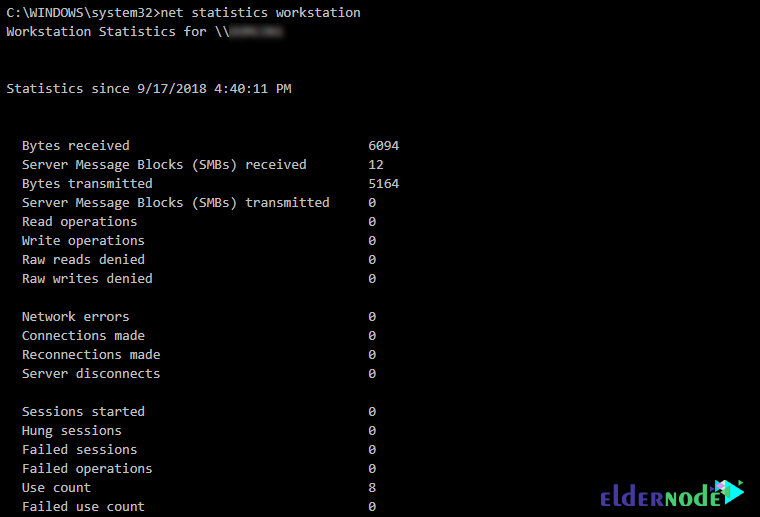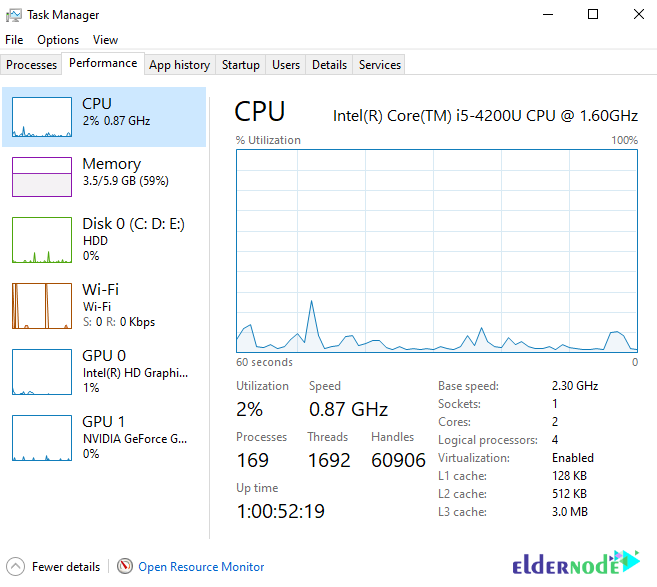
One of the things that many people need from time to time is how long their computer has been running without a reboot. This time is called uptime. In this article, we are going to teach you How to Analyze Uptime on Windows Server. You can visit the packages available in Eldernode if you wish to purchase a Windows VPS server.
Table of Contents
How to Analyze Uptime on Windows Server
Introduction to Analyze Uptime
Uptime is the amount of time available for a computer that is servicing and running. In this case, the system remains in a steady state automatically, without crashing. In addition, there is no need to restart the system for maintenance and repair or management purposes.
Note: A crash means a system shutdown due to a hardware failure or software error. This criterion is often used to measure system stability and validity.
Some people want to know how long it takes to install the operating system on their computer and decide to reinstall the operating system based on this time frame and the stability of the operating system.
Typically, web hosting companies report 99% uptime or server availability for one year. If a year is equal to 365 days, ie a maximum of 3 days a year, the server will have downtime. The definite reason could be a change in the data center network, a problem in configuring the server, attacking the server, updating the server hardware or software packages such as kernel, web server, PHP, MySQL, etc. When the server or its services have a problem, the problem should be identified and fixed as soon as possible.
The rest of this article, How to Analyze Uptime on Windows Server will be explained in several ways. Please join us.
Check and Analyze Uptime on Windows Server with Net Statistics
In this section, we want to show you how to Analyze Uptime on Windows Server with Net Statistics. To do this, just open the command line or PowerShell in the first step. Then you have to type and execute one of the following commands:
net statistics serveror
net statistics workstationThe important thing to know is that if you are using Windows Server 2012 or 2016, it is recommended to use a command ending on the server. Also, if you are running Windows 8.1 or 10, use the command ending on the workstation.
As you can see in the image below, the line starting with “Statistics since…” shows the last time your computer was booted:

Analyze Uptime on Windows Server with SystemInfo
The second method, called SystemInfo, is to view the last boot time of the device using a simple command prompt command. In this method you can use the following command:
systeminfoIt should be noted that you can use a pipe and find an operator to reduce the output only in the system boot timeline:
systeminfo | find “System Boot Time”Another interesting point is that if you want to check the boot time on a remote server, you can do the following:
systeminfo /s remoteservername | find “System Boot Time”How to Use the Windows Uptime Command
Before explaining this, it should be noted that the original Windows Server Uptime command was part of a program released by Microsoft called Uptime.exe. You can now download this file from the Internet Archive URL.
Once you have successfully downloaded the file, just put it in the C:\Windows\System32 folder.
After completing the above steps, you can now use the following command to find the system uptime:
uptimeIf you want to see the uptime on the server or workstation remotely, you can use the following command:
uptime remoteservernameAnalyze Uptime on Windows Server with Task Manager
In this method, we want to teach you how to view and analyze system uptime through Task Manager. To do this, just follow the steps below.
The first step is to open the Task Manager. To do this, you can right-click on the taskbar and click on Task Manager. After doing this, click on the Performance tab. As shown below in the CPU window, in the lower-left corner, you can see the Uptime:

Conclusion
Some customers do not pay attention to uptime because in other companies the same amount of uptime has been announced. The actual uptime is different in each host, so the solutions mentioned in this tutorial will help you. In this article, we tried to teach you How to Analyze Uptime on Windows Server.




